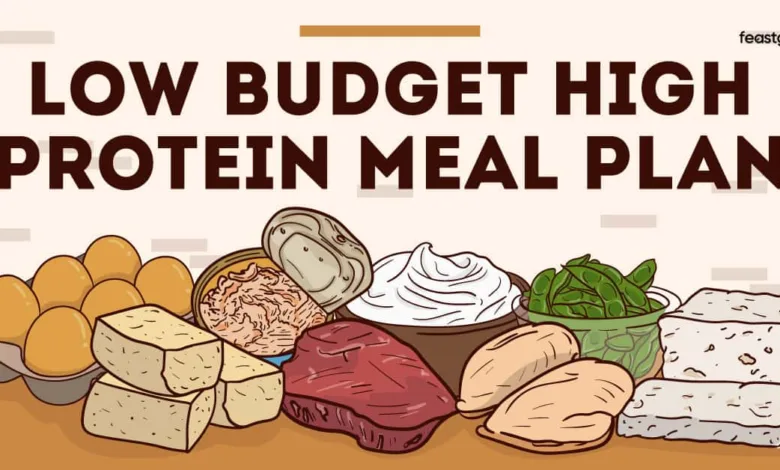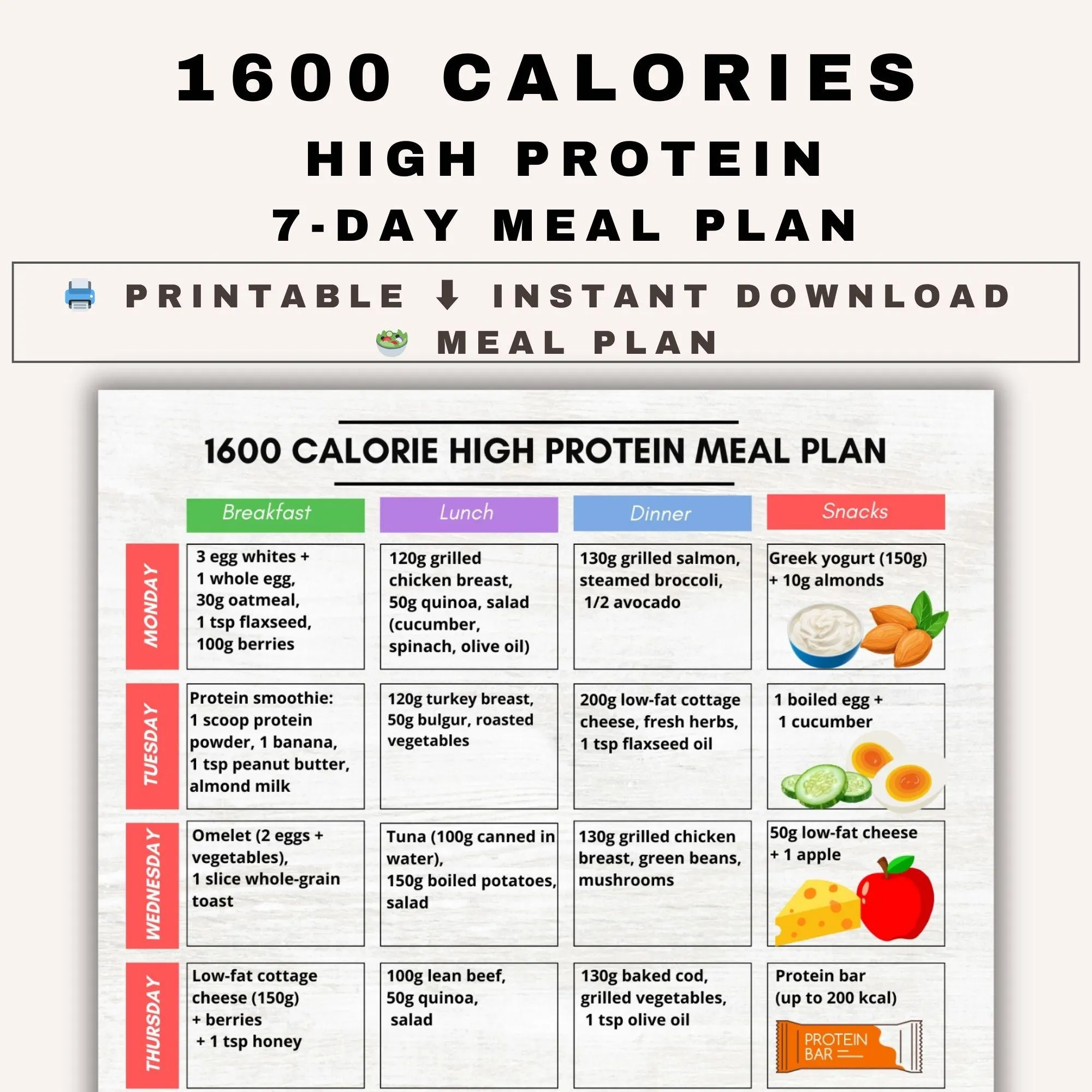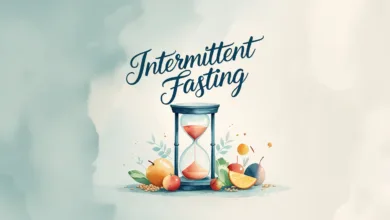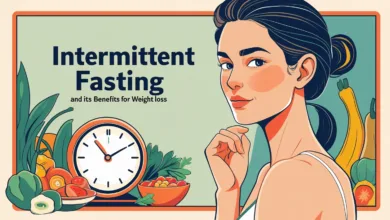7-Day Low-Budget High-Protein Meal Plan: Eat Well Without Breaking the Bank

Forget the myth that eating healthy protein costs a fortune. This comprehensive 7-day low-budget high-protein meal plan proves you can fuel your body, build muscle, and crush your fitness goals without sacrificing your savings account. Ready to revolutionize your plate and your wallet?
Your Wallet’s About to Thank You: High Protein Doesn’t Mean High Cost
Listen, I get it. You’ve been scrolling through those fitness influencer accounts, watching them prep elaborate meals with exotic ingredients that cost more than your monthly gym membership. And you’re thinking, “There’s no way I can afford to eat healthy.” Well, here’s the thing—you absolutely can, and I’m about to show you exactly how.
The truth? Protein is essential for muscle repair, immune function, and maintaining a healthy metabolism, according to research from the Academy of Nutrition and Dietetics. But here’s what the fancy meal prep companies won’t tell you: you don’t need grass-fed, organic, unicorn-blessed ingredients to hit your protein targets. What you need is strategy, a little creativity, and this rock-solid meal plan that’ll keep both your muscles and your bank account happy.
Why Protein Matters More Than You Think
Before we dive into the nitty-gritty of this 7-day low-budget high-protein meal plan, let’s talk about why protein deserves a starring role on your plate. Adults should aim for approximately 0.8 grams of protein per kilogram of body weight daily, though active individuals may need more, as outlined by Harvard Medical School’s nutrition guidelines.
But protein isn’t just for bodybuilders and athletes—nope, not even close! It’s the building block your body uses for pretty much everything: repairing tissues, making enzymes and hormones, keeping your skin glowing, your hair strong, and your immune system firing on all cylinders. Plus, here’s a bonus: protein keeps you fuller longer, which means fewer trips to the vending machine and more money staying put in your pocket.
The Budget-Friendly Protein Powerhouses You Need to Know
Alright, let’s get real about what actually saves you money. Forget the salmon fillets and organic chicken breasts for a second. Your true allies in affordable protein are hiding in plain sight at your local grocery store.
The Magnificent Seven Budget Proteins:
- Eggs – Seriously, is there anything more versatile? At roughly $3-4 per dozen, you’re looking at about 25 cents per egg, each packing 6 grams of protein.
- Canned Tuna – Don’t knock the can! For under $1 per serving, you’re getting 20+ grams of protein.
- Dried Beans and Lentils – These little nutritional powerhouses cost pennies per serving and deliver both protein and fiber.
- Greek Yogurt – When on sale, this creamy goodness offers 15-20 grams of protein per cup.
- Peanut Butter – Two tablespoons = 8 grams of protein, plus healthy fats that’ll keep you satisfied.
- Frozen Chicken Thighs – Way cheaper than breasts and honestly? More flavorful.
- Cottage Cheese – Often overlooked, but half a cup delivers about 14 grams of protein.
The secret sauce here isn’t just buying cheap—it’s buying smart. Plant-based proteins like beans, lentils, and peas provide excellent nutrition at a fraction of the cost of animal proteins, according to research published by the American Journal of Clinical Nutrition.

Your Complete 7-Day Low-Budget High-Protein Meal Plan
Okay, let’s get down to business! This week-long plan is designed to keep your daily protein intake between 80-100 grams while staying under $50 for the entire week. Yep, you read that right—about $7 per day.
Day 1: Starting Strong
Breakfast: Scrambled Eggs with Spinach (3 eggs, handful of spinach, sprinkle of cheese)
- Protein: 21g | Cost: ~$1.20
Lunch: Tuna Salad Sandwich (1 can tuna, 2 slices whole wheat bread, lettuce, tomato)
- Protein: 25g | Cost: ~$2.00
Dinner: Lentil Chili with Brown Rice (1 cup cooked lentils, tomatoes, onions, spices, ½ cup rice)
- Protein: 22g | Cost: ~$1.80
Snacks: Greek yogurt with banana, handful of peanuts
- Protein: 18g | Cost: ~$1.50
Daily Total: 86g protein | ~$6.50
Day 2: Keeping It Fresh
Breakfast: Peanut Butter Oatmeal (½ cup oats, 2 tbsp PB, splash of milk)
- Protein: 14g | Cost: ~$0.90
Lunch: Black Bean Quesadilla (1 tortilla, ½ cup black beans, cheese, salsa)
- Protein: 18g | Cost: ~$1.50
Dinner: Baked Chicken Thighs with Roasted Veggies (2 thighs, mixed frozen vegetables)
- Protein: 35g | Cost: ~$2.50
Snacks: Hard-boiled eggs (2), apple with PB
- Protein: 18g | Cost: ~$1.00
Daily Total: 85g protein | ~$5.90
Day 3: Mix Things Up
Breakfast: Cottage Cheese Bowl (1 cup cottage cheese, berries, granola)
- Protein: 28g | Cost: ~$1.80
Lunch: Egg Salad Wrap (3 eggs, whole wheat wrap, lettuce, mustard)
- Protein: 22g | Cost: ~$1.30
Dinner: Turkey Chili (ground turkey, kidney beans, tomatoes, spices)
- Protein: 32g | Cost: ~$2.80
Snacks: Greek yogurt, string cheese
- Protein: 20g | Cost: ~$1.40
Daily Total: 102g protein | ~$7.30
Day 4: Budget Champion Day
Breakfast: Protein Pancakes (1 cup oats blended, 2 eggs, banana, cinnamon)
- Protein: 18g | Cost: ~$1.10
Lunch: Chickpea Salad (1 cup chickpeas, cucumber, tomato, lemon dressing)
- Protein: 15g | Cost: ~$1.40
Dinner: Beef and Bean Burrito Bowl (ground beef, black beans, rice, salsa, cheese)
- Protein: 38g | Cost: ~$2.60
Snacks: Peanut butter toast, milk
- Protein: 14g | Cost: ~$0.90
Daily Total: 85g protein | ~$6.00
Day 5: Halfway There!
Breakfast: Veggie Omelet (3 eggs, peppers, onions, mushrooms, cheese)
- Protein: 24g | Cost: ~$1.50
Lunch: Tuna Pasta Salad (pasta, canned tuna, peas, light mayo)
- Protein: 28g | Cost: ~$1.80
Dinner: Lentil Shepherd’s Pie (lentils, mixed veggies, mashed potatoes on top)
- Protein: 20g | Cost: ~$2.20
Snacks: Greek yogurt parfait, almonds
- Protein: 18g | Cost: ~$1.50
Daily Total: 90g protein | ~$7.00
Day 6: Weekend Warrior
Breakfast: Breakfast Burrito (2 eggs, black beans, cheese, tortilla, salsa)
- Protein: 22g | Cost: ~$1.40
Lunch: Chicken Stir-Fry (chicken thighs, frozen stir-fry veggies, soy sauce, rice)
- Protein: 30g | Cost: ~$2.30
Dinner: White Bean and Veggie Soup (cannellini beans, carrots, celery, spinach)
- Protein: 18g | Cost: ~$1.70
Snacks: Cottage cheese with pineapple, hard-boiled egg
- Protein: 22g | Cost: ~$1.40
Daily Total: 92g protein | ~$6.80
Day 7: Finish Strong
Breakfast: High-Protein Smoothie (Greek yogurt, milk, banana, PB, oats)
- Protein: 25g | Cost: ~$1.60
Lunch: Bean and Cheese Quesadilla with side salad
- Protein: 20g | Cost: ~$1.50
Dinner: Baked Cod with Quinoa and Broccoli (frozen cod, quinoa, frozen broccoli)
- Protein: 32g | Cost: ~$3.00
Snacks: Trail mix, string cheese
- Protein: 15g | Cost: ~$1.20
Daily Total: 92g protein | ~$7.30
Weekly Total: Approximately $48.20 for the entire week!
Smart Shopping Strategies That’ll Save You Hundreds
Now, having a meal plan is fantastic, but if you’re not shopping smart, you’re leaving money on the table—literally. Here’s how to maximize every dollar.
Buy in Bulk: Things like rice, oats, dried beans, and lentils are exponentially cheaper when purchased in larger quantities. We’re talking 50% savings or more! Plus, they last forever in your pantry, so there’s zero food waste to worry about.
Embrace Frozen: Here’s something nutritionists don’t say enough—frozen vegetables and proteins are just as nutritious as fresh, sometimes even more so because they’re flash-frozen at peak ripeness. Frozen produce retains most of its nutrients and can be more economical than fresh options, according to studies from the University of California Agriculture and Natural Resources.
Store Brand for the Win: That fancy packaging? You’re paying for it. Store brands are typically 20-40% cheaper than name brands and often made in the same facilities. Your taste buds won’t know the difference, but your wallet will.
Meal Prep: Your Secret Weapon for Success
Let’s be honest—the biggest threat to your budget isn’t groceries; it’s that moment when you’re starving, unprepared, and suddenly DoorDash is calling your name. Meal prep solves this problem beautifully.
Dedicate two hours on Sunday (throw on a podcast, make it fun!) to prep your proteins and grains for the week. Cook a big batch of chicken thighs, boil a dozen eggs, prepare your lentils and rice, chop your veggies. Boom! You’ve just set yourself up for success and saved yourself from expensive takeout temptation.
Store everything in clear containers so you can actually see what you have. Label things if you’re fancy like that. The easier you make it to grab and go, the more likely you’ll stick with this 7-day low-budget high-protein meal plan week after week.
FAQs: Your Burning Questions Answered
Q: Can I really build muscle on a budget meal plan? Absolutely! Muscle building depends on adequate protein intake, progressive resistance training, and recovery—not on how much you spend at Whole Foods. As long as you’re hitting your protein targets (which this plan does), your muscles don’t care whether that protein came from expensive wild-caught salmon or affordable canned tuna.
Q: What if I’m vegetarian or vegan? No problem whatsoever! Simply swap the animal proteins for plant-based alternatives. Replace chicken with extra beans, lentils, or tofu. Use more nuts, seeds, and quinoa. Add nutritional yeast for extra protein and a cheesy flavor. The beauty of this approach is its flexibility.
Q: How do I add variety without increasing costs? Spices are your best friend—they’re cheap and transform the same basic ingredients into completely different meals. A can of black beans becomes Mexican with cumin and chili powder, Italian with oregano and basil, or Indian with curry and turmeric. One ingredient, endless possibilities!
Q: Is it healthy to eat eggs every day? For most people, yes! Recent research shows that consuming up to one egg per day is not associated with increased cardiovascular risk for most people, according to findings published in the British Medical Journal. Plus, eggs are nutritional powerhouses packed with vitamins, minerals, and high-quality protein.
Q: How can I make this work for a family? Simply multiply the portions! The beauty of budget cooking is that it scales beautifully. A big pot of chili or lentil soup costs only slightly more than a small one, and you’ll have leftovers for days. Get the kids involved in meal prep—it’s educational and fun.
Q: What about protein powder—should I include it? Only if you want to! While protein powder can be convenient, it’s not necessary when you’re getting adequate protein from whole foods. However, if you find a good deal (store brands are often excellent quality), it can add variety to smoothies and oatmeal.
Wrapping It All Up: Your Path to Protein Success
So there you have it—your complete roadmap to eating high-protein on a shoestring budget. The myth that healthy eating requires a hefty paycheck? Consider it busted. This 7-day low-budget high-protein meal plan proves that with a little planning, smart shopping, and creativity, you can fuel your body properly while keeping your finances in check.
The real magic happens when you realize that budget-friendly doesn’t mean boring or nutritionally inadequate. It means being intentional, resourceful, and just a bit clever about how you approach food. Those basic, affordable proteins we’ve talked about? They’re the same building blocks your body uses whether they came from a fancy boutique or the discount aisle.
Start with this one week. Follow the plan, adjust portions to fit your needs, and watch what happens. Not just to your body, but to your relationship with food and money. You’ll probably discover that you actually enjoy cooking more when you’re not stressed about costs. You might even find yourself getting creative, experimenting with new spice combinations, or proudly sharing your budget wins with friends.
Remember, consistency beats perfection every single time. You don’t need to follow this plan to the letter—use it as your foundation and build from there. Swap meals around, repeat your favorites, adjust for what’s on sale at your local store. The goal isn’t rigid adherence; it’s developing sustainable habits that support your health without draining your resources.
Your health is an investment, not an expense, but that doesn’t mean it should bankrupt you. Here’s to eating well, feeling great, and keeping your hard-earned money where it belongs—in your pocket!







